Inner Kora of Mt.Kailash
- by Jennie
- Last Updated: 2025-03-14
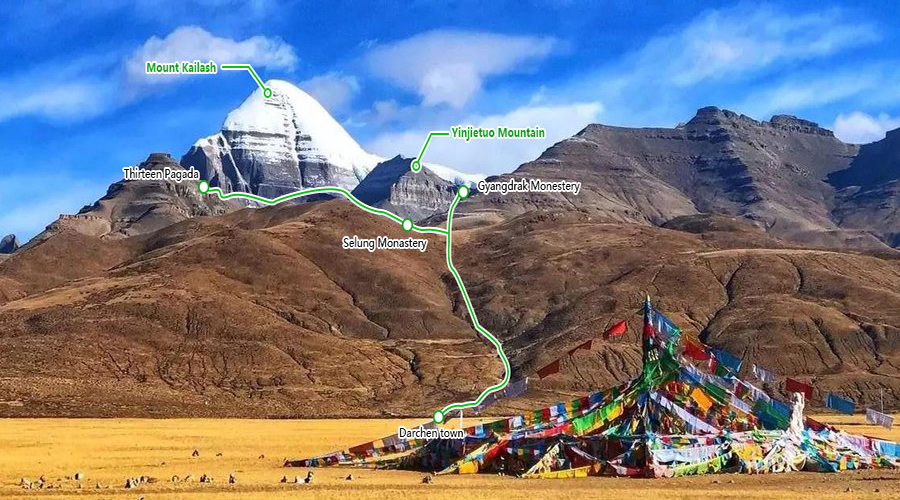
Mt.Kailash is one of the four sacred mountains of Tibetan Buddhism. It is also recognized as the "center of the world" by Hinduism, Tibetan Buddhism, the native religion of Tibet - Bon religion, and ancient Jainism. Every year, many believers from Tibet, India, Nepal and other places make a pilgrimage to Kailash.
There're outer kora and inner kora. Buddhism believes that Mount Gangdise is the king of the mountains and the dwelling of Chakrasamvara. The surrounding mountains and rivers are all its components, thus forming the outer kora route. The inner kora route is centered on Yinjietuo Mountain, which is next to the south face of Mt.Kailash. Yinjietuo Mountain(5,975m) represents the head of sixteen venerables and the mountains and rivers around it symbolize the Arhats, Bodhi, Sravaka and Pratyeka Buddha. The inner kora is the core pilgrimage area of Kailash, with higher religious and sacred significance.
Tibetan Buddhists believe that they need to have the merits of doing the outer kora for 13 circles to be capable of doing the inner kora. In Tibet, "Thirteen" represents the completion of merit and virtue. And in the inner circuit, Thirteen Pagoda is the most difficult to reach with the most stunning landscape. There is a legend that the year of the horse is the year of the holy mountain. The merit of trekking the mountain for one circle is equal to other years of trekking for thirteen circles. Therefore, every Tibetan horse year, a steady stream of pilgrims come to Mt.Kailash, hoping to complete it, and then enter the inner circle to continue the pilgrimage.
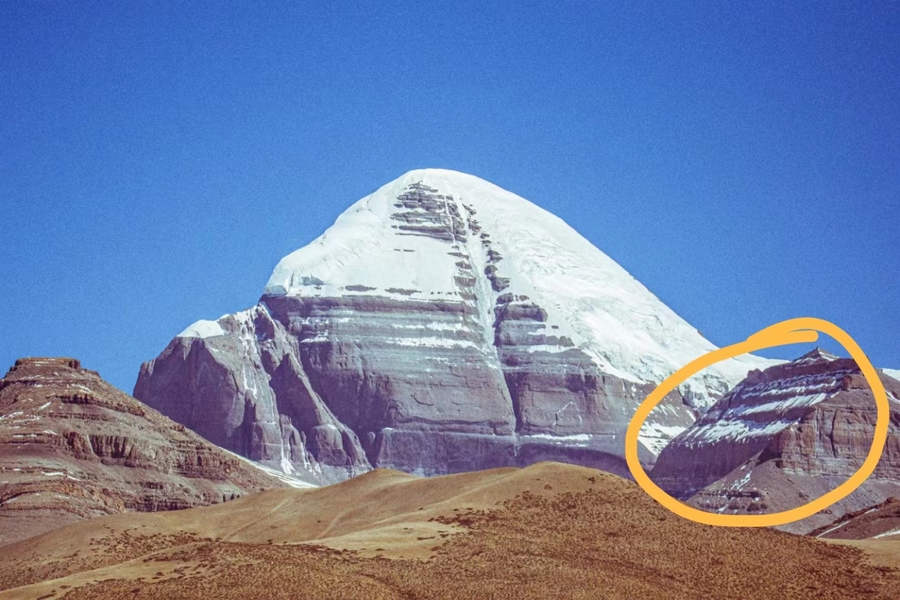
Route of Inner Circle
Inner Kora starts from Darchen, with a total length of about 28 kilometers, which usually takes one day to complete, and the highest point of the whole Kora is nearly 6,000 meters, with a high trekking difficulty. And for half the year, the trail is covered with snow and ice, so its danger risk factor is also high.
Section One: Darchen to Selung Monastery
There's a distance of 4.5 kilometers from Darchen to Selung Monastery. You can either drive or hike there. Starting from the Mani Wall at the east end of Darchen Town, after climbing up the black hillside behind, head north along the driveway. The river valley on the left is deep and the sound of water echoes, and the hillside on the right is full of green grass, dotted with several prayer flags. The mountain road has little ups and downs. After an easy walk of two kilometers, you will see a fork in the road. Looking northeast along the road on the right, there is an exquisite monastery in the shape of Sumeru pedestal, which is Gyangdrak Monastery. Take the road on the left and follow the path along the river for three kilometers, you will reach Selung Temple.
The difficult part of this section is to cross the river. The seemingly small river beach is actually very wide, with fast and cool water, and the depth is enough to reach your knees. You can use trekking poles and step on stones in the narrow part of the river to cross it.
After passing a row of white pagodas next to Selung Monastery, a huge steep slope is shown in the front, you need to work hard to climb up. With the change of vision, the holy mountain Kailash becomes larger and clearer by displaying "Vajra Hand Peak" and "Wenshu Peak".
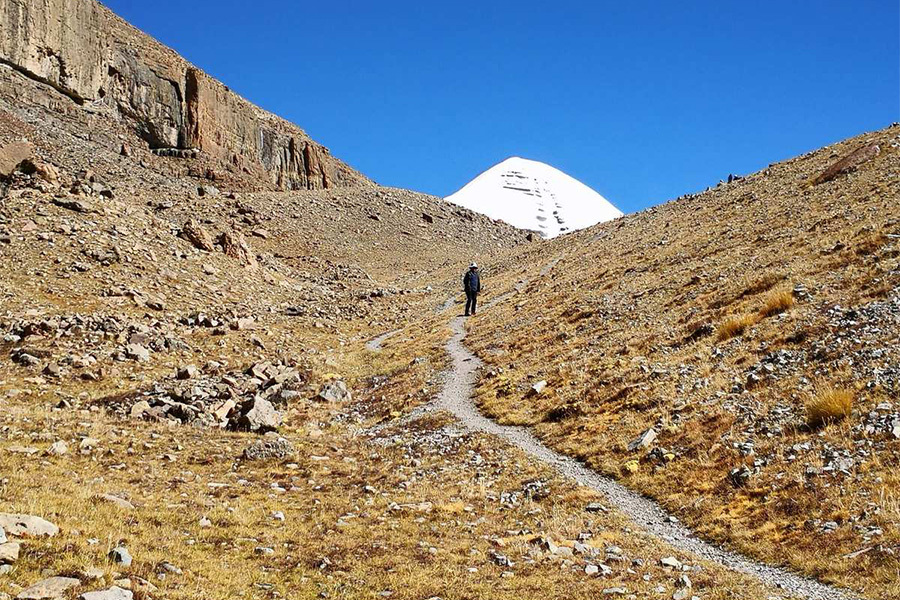
Section Two: Mount Yinjietuo to Thirteen Pagoda
From Selung Monastery to the north, climbing to the Thirteen Pagoda at the crack of the hillside of Kailash, there's a distance of about 8km. It can be completed in about 5 hours.
Trekking along the path towards Kailash, there is a row of sharply black mountains on the left side, and the melted snow water of the holy Mountain flows down not far ahead, flowing ripply in the valley on the right. There're chunks of green moss between the stones on either side of the path, and nothing else. It goes up slowly, and after 5 kilometers, you can arrive at Mount Yinjietuo. Bypass Yinjietuo, continue along the west side of the mountain towards holy Mt.Kailash, trek for about 1 hour, you will get to the foot of the holy mountain. Then climb over the mountain pass between Yinjietuo Mountain and Kailash Rinpoche, you can arrive at the most solemn place for viewing and worshiping the holy mountain. Here you will see a place full of colorful prayer flags on the cliff, which is where the Thirteen Pagoda is located.
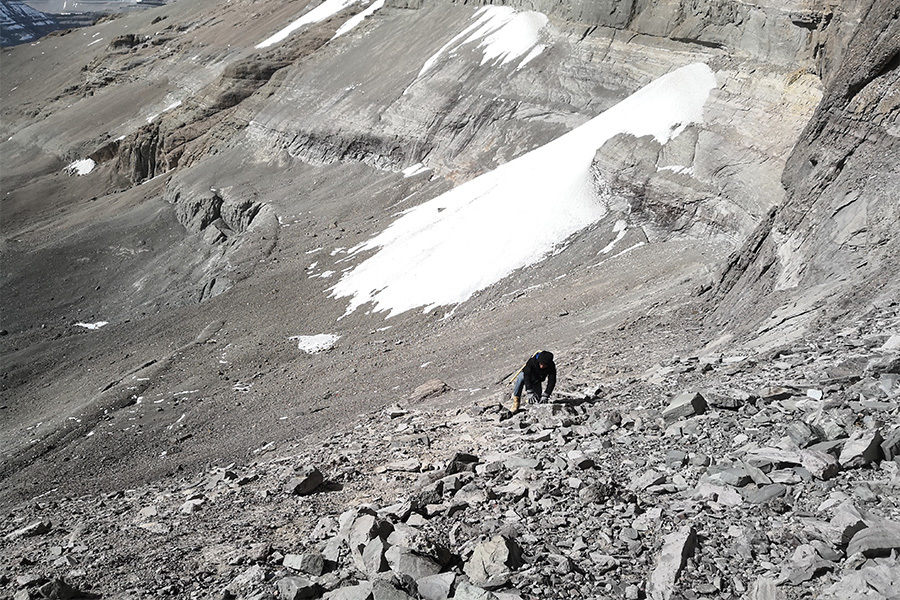
However, for people with average physical strength, it is enough to reach the bottom of the cliff, and this is also the place where ordinary Tibetan women worship the mountain. To the cliff, there is a traction rope connected by believers with Khata, which can help pilgrims climb up with strength and prevent them from slipping and falling down. It is not recommended to go to Thirteen Pagoda without the guidance of professional guides or climbers, as it's literally dangerous.
After worshiping the Thirteen Pagoda, you can go down the mountain on the same trail and return along the valley on the east side of Yinjietuo Mountain.
Section Three: Selung Monastery - Gyangdrak Monastery - Darchen
After circling Yinjietuo Mountain, turn back to Selung Monastery. Cross the river beach on the east side of Selung Monastery, go up the hillside, and head towards Gyangdrak Monastery. Passing through the crisscrossed rock zones and landslide zones, you will reach a mountain pass at an altitude of 5,300 meters.
Looking north from the pass, the holy mountain once again reveals its holy snow top. Looking to the south, the combination of Namunani Peak and the holy Lake Manasarovar is like a piece of suet-white jade placed on top of royal blue silk satin. Looking to the east, Gyangdrak Monastery can be seen in the distance. Going back towards Gyangdrak Monastery, the mountain path is generally gentle, and the atmosphere of the temple is getting stronger and stronger. Before it gets completely dark, return to Darchen along the driveway, and the inner kora ends.
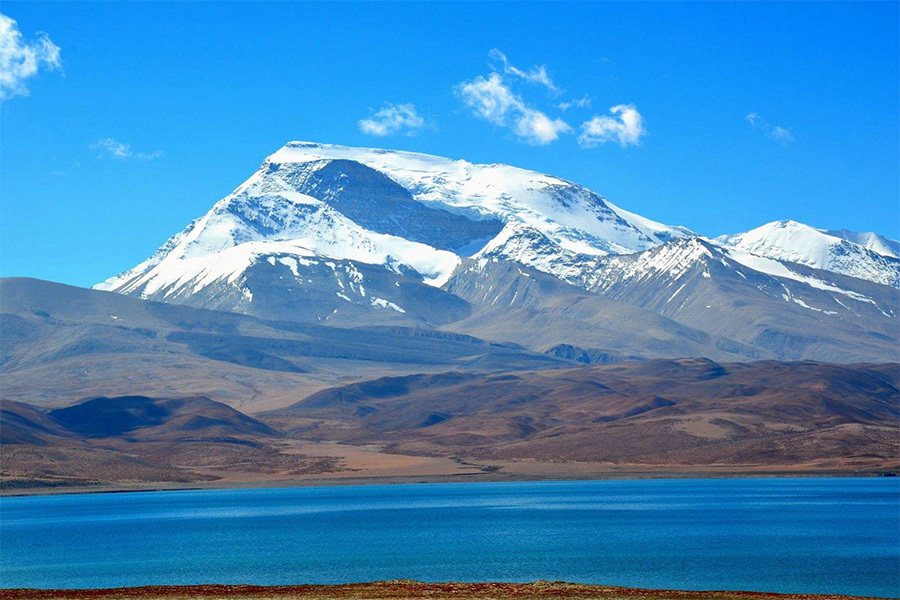
Three Religious Landscapes
Gyangdrak Monastery, Selung Monastery and Thirteen Pagoda are the three most significant religious landscapes on the way of the inner Kora.
Gyangdrak Monastery(Gyangdrak Gompa)
In the northeast of Darchen town, among all the monasteries surrounding the sacred mountain Kailash, Gyangdrak Monastery is the largest one. According to legend, this gompa was built by Goya Gompa, a practitioner of Drikung Kagyu school, has a history of more than 800 years, and was once the religious center of the area.
There are a large number of holy sites around it, dotted with odd-shaped caves, springs, etc., such as the Dzong building where Goya Gompa practiced, the platform where Sakyamuni sat when he preached the Dharma to the Dragon King, the toad-shaped rock from which someone took out the key to open the inner kora, as well as the meditation rooms, sleeping palaces, dharma protection halls and drinking springs of many famous monks, etc. The monastery enshrines the statue of Jigten Sumgön, the founder of the Drikung Kagyu Sect, and it is said that there is a tooth of the master hidden in the statue. Also, more than a hundred volumes of the Sutra brought from India were served here.
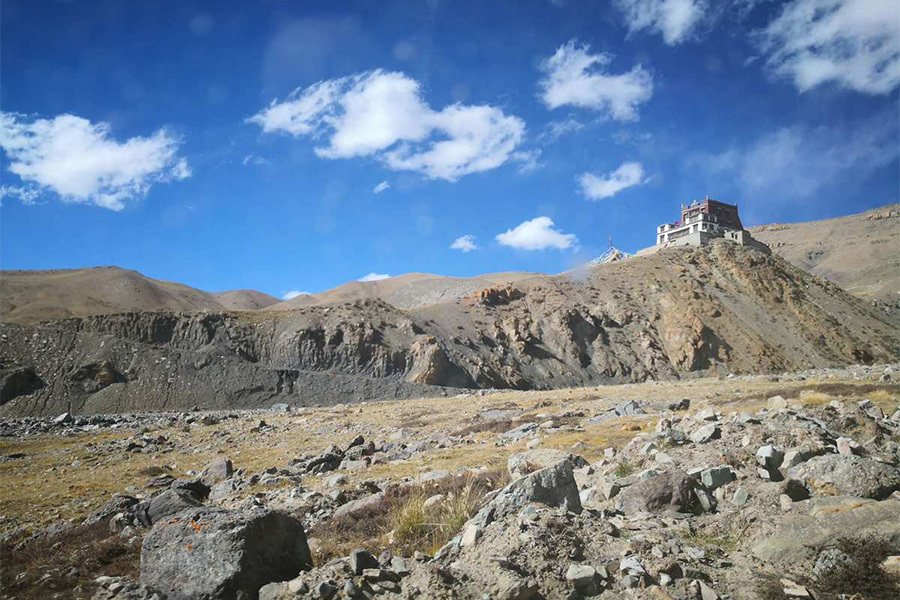
Selung Monastery
This monastery is relatively small in size, opposite Gyangdrak Monastery. Many Indian and Nepalese pilgrims will go to worship because of the monastery's main offering, Padmasambhava, a great master from India. Selung Monastery is a two-story red stone building. The monastery faces the holy mountain, and the main hall is on the second floor. When believers worship Padmasambhava, lamas will light the ghee lamps one by one. There is a small hall inside, dedicated to the pictures of Gyalwa Karmapa and Thaye Dorje. Around the monastery, there are quite a number of mani stone piles, half a meter high, as a small jungle; also there are some simple huts built with four or five stones under the mani stones, which are the soul residences built by believers for the afterlife.
The best place to enjoy the southern face of Mt.Kailash is also the place above Selung Monastery. In this sense, it is definitely a place worth visiting. The large vertical ice crack on the southern wall of the sacred mountain and the horizontal rock line on the mountain's waist form a Buddhist symbol " 卍 ", a concentrated embodiment of the spirit, representing auspiciousness and protection.
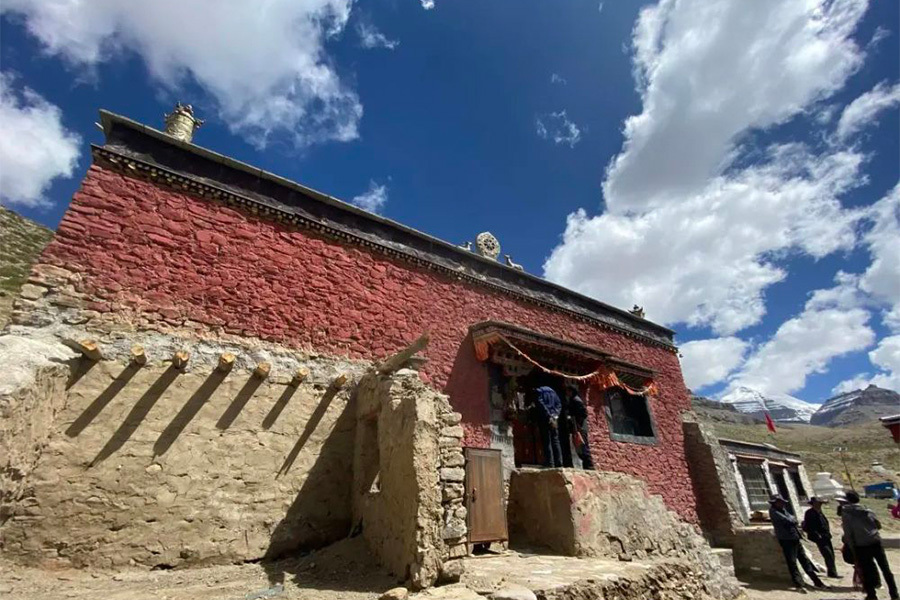
Thirteen Pagoda
This is the most difficult and most stunning view of the inner kora, enshrining the dharma bodies of the thirteen masters of Drigung Kagyu. It is located on the eastern side of the southern face of the sacred mountain, only a hundred meters from the bottom of the large vertical ice trough.
In a semi-natural, semi-artificial rock groove, there are thirteen pagodas. Each pagoda is wrapped in gold at the top and presented with Khadas, connected by colorful prayer flags, and many ritual items and offerings from devotees are placed around the base of the pagoda. Getting to Thirteen Pagoda requires climbing a vertical cliff more than 100 meters high with strong physical strength and will only if the weather is suitable, so few people can reach and worship there.
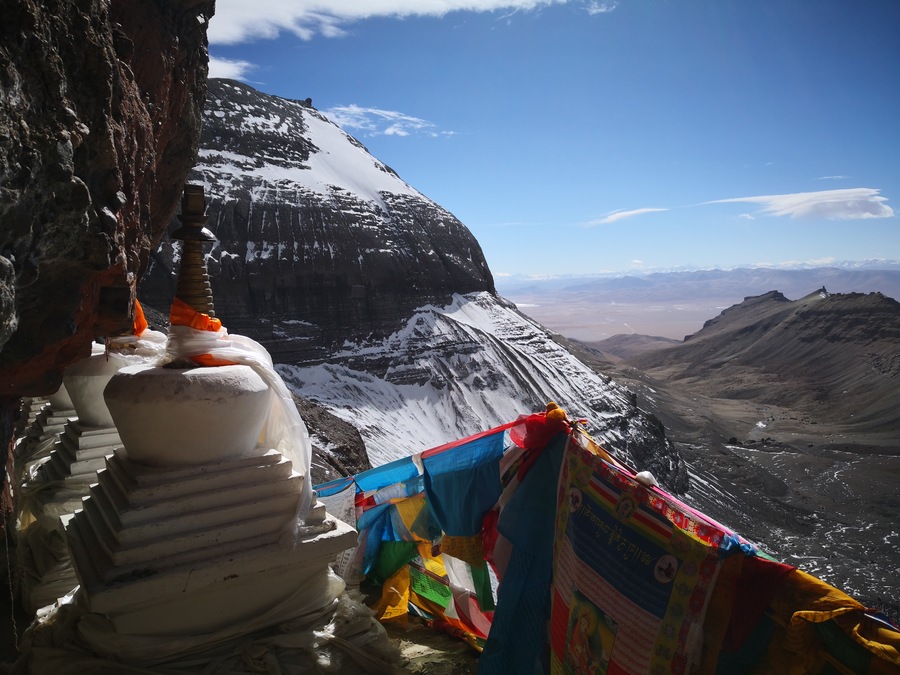
Travel Tips
- The best season for Inner Kora: Early July to early September every year.
- Pack list: outdoor jackets and pants, hiking shoes or sports shoes, hiking poles, sunglasses, sunscreen, high-calorie food, and portable oxygen tanks.
- Beware of falling rocks: There is a saying among the local pilgrims that if you have not yet completed 13 outer kora and do the inner kora, you might be killed by the stones falling from the mountain. In fact, there is a possibility of falling gravel from the mountain. Therefore, going to the inner circle of the mountain must have strong mental qualities and excessive physical strength, as well as a helmet and safety ropes.
- Do not go alone: It's recommended to follow Tibetans or an experienced tour guide to do the Inner Kora because there is no obvious path in the inner circle. If there is no one with you, you'll be easy to get lost.
- Do not feed wild animals: If you are lucky, you will encounter marmots, also known as the Himalayan groundhog, which is one of the local animals. However, to prevent wild animals from becoming dependent on human feeding behavior, please do not feed them.
Conclusion
The inner kora route not only concentrates on the essence of religious landscapes and landforms but also has more difficult and challenging climbings. When you are approaching the holy mountain Kailash step by step, you will feel its miraculous and impact. It's definitely a spiritual pilgrimage!
Related Articles
- 15 Little-known Mount Kailash Facts & Mysteries
- How to Complete Mount Kailash Trek?
- Best Time to Visit Kailash Mansarovar
- Kailash Mansarovar Yatra: Once in A Lifetime Experience
- Climbing Mount Kailash: Is Mount Kailash Climbable?
- Mount Kailash Kora Route Map
Email response within 0.5~24 hours.


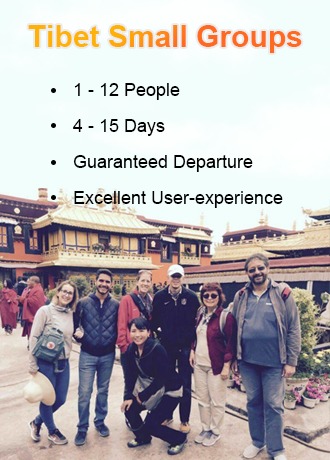

Typically Asked Questions from Our Clients
Asked by Piyu***
I need to go on inner kora tour, could you please help? I am an American citizen.
Dear Piyu****,
We can arrange the Darchen - Selung Gompa - Gold Pagoda - Darchen Inner Kora route for you.
Before I quote you, could you please let me know the following information?
1. When are you going to have Tibet tour? Different season, different cost. We suggest guests consider the tour from May to early October.
2. How many people in your group?
3. What kind of accommodation would you like to stay in? The comfortable (4-star) or economy class (3-star) hotel?
Asked by Hris***
Is inner kora tours open for foreigners? I heard they have been shutdown since 2013.
Dear Hris****,
Yes, we can arrange the Inner Kora of Mt.Kailash for you. May I know how many travelers are from you, and your planned departure date? May I know your nationality? Currently, China has opened a 30-day visa-free policy for citizens of many countries.
Asked by Amit***
Do you have any tours available for inner kora?
Dear Amit****,
1. We can arrange the Mt.Everest & Mt.Kailash Kora Pilgrimage Tour for you. We can't arrange the 1-day Inner Kora for you but you can ask your guide to take you to touch Mt.Kailash, about a 3-hour trek after the first day trek. This is not a part of the package and you can reach an agreement with your guide.
2. We can arrange the tour for you from late April to early October.